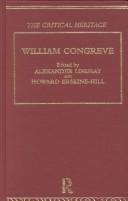| Listing 1 - 10 of 12 | << page >> |
Sort by
|
Book
ISBN: 1281297895 9786611297893 1847143091 9781847143099 0720120381 9780720120387 0720119987 9780720119985 9781281297891 Year: 1997 Publisher: London : Mansell,
Abstract | Keywords | Export | Availability | Bookmark
 Loading...
Loading...Choose an application
- Reference Manager
- EndNote
- RefWorks (Direct export to RefWorks)
Eleven authors are included in this final part of Volume III of the Index, beginning with Laurence Sterne and concluding with Edward Young. It also includes the final cumulative first-line index of all the verse which is described in the manuscript entries or mentioned in the Introductions in Parts 1-4 of Volume III.
Book
ISBN: 1139344056 1108051979 Year: 1847 Publisher: Place of publication not identified : Cambridge : publisher not identified, Cambridge University Press
Abstract | Keywords | Export | Availability | Bookmark
 Loading...
Loading...Choose an application
- Reference Manager
- EndNote
- RefWorks (Direct export to RefWorks)
Alexander Lindsay (1812-80) was the head of an aristocratic family who owned vast coalfields in Lancashire, generating enormous wealth. Educated at Eton and Trinity College, Cambridge, he spent the majority of his time travelling in Italy, collecting, and writing on a variety of subjects, including art, the Indo-Aryan race and the Etruscans. This important work, published in three volumes in 1847, surveys Christian painting and sculpture. Addressing Romance literature of the Middle Ages, iconography and legends of the saints, the book's historical narrative is infused with the author's strong moral approach to the subject. Volume 3 covers the schools of Siena, Florence and Bologna, then moves north to look at Cologne, Dürer, and Cranach, the Van Eycks and the Netherlandish School. Though derided by John Ruskin, the work strongly influenced aristocratic collecting, and remains relevant to readers interested in the Victorian construction of morals and artistic taste.
Book
ISBN: 113934403X 1108051952 Year: 1847 Publisher: Place of publication not identified : Cambridge : publisher not identified, Cambridge University Press
Abstract | Keywords | Export | Availability | Bookmark
 Loading...
Loading...Choose an application
- Reference Manager
- EndNote
- RefWorks (Direct export to RefWorks)
Alexander Lindsay (1812-80) was the head of an aristocratic family who owned vast coalfields in Lancashire, generating enormous wealth. Educated at Eton and Trinity College, Cambridge, he spent the majority of his time travelling in Italy, collecting, and writing on a variety of subjects, including art, the Indo-Aryan race and the Etruscans. This important work, published in three volumes in 1847, surveys Christian painting and sculpture. Addressing Romance literature of the Middle Ages, iconography and legends of the saints, the book's historical narrative is infused with the author's strong moral approach to the subject. Volume 1 covers philosophical method, Christian symbolism and mythology, Roman art, and Byzantine art, which Lindsay sees as having stimulated the Western revival. Though derided by John Ruskin, the work strongly influenced aristocratic collecting, and remains relevant to readers interested in the Victorian construction of morals and artistic taste.
Book
ISBN: 1139344048 1108051960 Year: 1847 Publisher: Place of publication not identified : Cambridge : publisher not identified, Cambridge University Press
Abstract | Keywords | Export | Availability | Bookmark
 Loading...
Loading...Choose an application
- Reference Manager
- EndNote
- RefWorks (Direct export to RefWorks)
Alexander Lindsay (1812-80) was the head of an aristocratic family who owned vast coalfields in Lancashire, generating enormous wealth. Educated at Eton and Trinity College, Cambridge, he spent the majority of his time travelling in Italy, collecting, and writing on a variety of subjects, including art, the Indo-Aryan race and the Etruscans. This important work, published in three volumes in 1847, surveys Christian painting and sculpture. Addressing Romance literature of the Middle Ages, iconography and legends of the saints, the book's historical narrative is infused with the author's strong moral approach to the subject. Volume 2 covers Gothic architecture; the art of the Lombards; Pisano and Giotto, and their schools and followers. Though derided by John Ruskin, the work strongly influenced aristocratic collecting, and remains relevant to readers interested in the Victorian construction of morals and artistic taste.
Multi
ISBN: 9781139344043 9781108051965 Year: 1847 Publisher: Place of publication unknown:Cambridge publisher unknown,Cambridge University Press
Abstract | Keywords | Export | Availability | Bookmark
 Loading...
Loading...Choose an application
- Reference Manager
- EndNote
- RefWorks (Direct export to RefWorks)
Multi
ISBN: 9781139344036 9781108051958 Year: 1847 Publisher: Place of publication unknown:Cambridge publisher unknown,Cambridge University Press
Abstract | Keywords | Export | Availability | Bookmark
 Loading...
Loading...Choose an application
- Reference Manager
- EndNote
- RefWorks (Direct export to RefWorks)
Multi
ISBN: 9781139344050 9781108051972 Year: 1847 Publisher: Place of publication unknown:Cambridge publisher unknown,Cambridge University Press
Abstract | Keywords | Export | Availability | Bookmark
 Loading...
Loading...Choose an application
- Reference Manager
- EndNote
- RefWorks (Direct export to RefWorks)

ISBN: 1134782640 1280325119 0203197798 0203286405 0415134315 0415756685 9780203286401 9780203197790 9780415134316 9781134782642 9781134782598 1134782594 9781134782635 1134782632 9780415756686 Year: 1989 Publisher: London ; New York : Routledge,
Abstract | Keywords | Export | Availability | Bookmark
 Loading...
Loading...Choose an application
- Reference Manager
- EndNote
- RefWorks (Direct export to RefWorks)
The Critical Heritage gathers together a large body of critical sources on major figures in literature. Each volume presents contemporary responses to a writer's work, enabling student and researcher to read the material themselves.
Book
Year: 1641 Publisher: [Edinburgh? : s.n.],
Abstract | Keywords | Export | Availability | Bookmark
 Loading...
Loading...Choose an application
- Reference Manager
- EndNote
- RefWorks (Direct export to RefWorks)
eebo-0158
Book
Year: 1641 Publisher: [S.l.] : Printed for H. Walker,
Abstract | Keywords | Export | Availability | Bookmark
 Loading...
Loading...Choose an application
- Reference Manager
- EndNote
- RefWorks (Direct export to RefWorks)
eebo-0062
| Listing 1 - 10 of 12 | << page >> |
Sort by
|

 Search
Search Feedback
Feedback About UniCat
About UniCat  Help
Help News
News